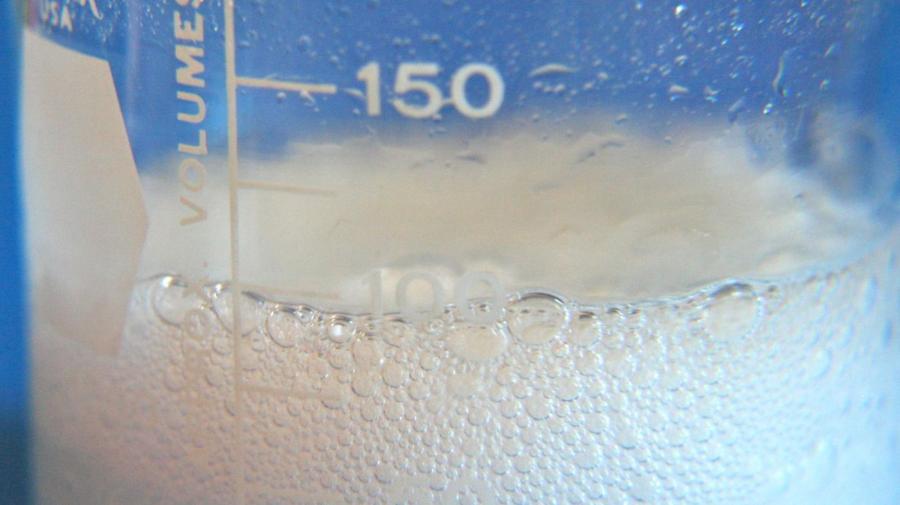What Happens When You Mix Vinegar and Baking Soda?

Mixing vinegar and baking soda initiates a chemical reaction that produces carbon dioxide and water. The chemical names of the two ingredients are acetic acid, which is vinegar, and sodium bicarbonate, which is baking soda.
An acid-base reaction occurs after mixing vinegar and baking soda, according to the UCSB ScienceLine website. Baking soda and vinegar react due to the exchange of atoms that occurs after combining them. Baking soda contains one sodium atom, one hydrogen atom, one oxygen atom and one carbon dioxide molecule. Vinegar contains one hydrogen atom and one acetate ion. After combining the two ingredients, the hydrogen atom present in the acetic acid mixes with the hydrogen and oxygen atoms in the sodium bicarbonate, which creates a molecule of water. At the same time, the acetate ion attaches to the sodium atom, which creates sodium acetate.
The Chemical Reaction
Free of the previous chemical bonds, the carbon dioxide escapes as a gas. This process often results in an “explosion” because of limited space in a container where the mixing takes place. As the gas expands in the container, eventually the lack of space pressurizes to the point of forcing a lid off the top of the container. When this happens, the ingredients burst or bubble out with force.
Creating the Reaction
A chemical reaction or change occurs any time a molecule changes, according to a document published by Calvin College. This reaction may involve gaining or losing atoms or atoms binding to other molecules. The end result of the reaction involves the new molecules having different properties than the original molecules. When this happens, it’s possible to see the reaction because of the physical change.
With vinegar, baking soda and a container, it’s possible to create and measure the chemical reaction that occurs when mixing these ingredients. Placing about a teaspoon of baking soda in a small cup and adding about a tablespoon of vinegar to the cup will cause the ingredients to begin bubbling and fizzing. People of all ages often enjoy experimenting with mixing baking soda and vinegar together to watch the fizzing and bubbles. The harmless chemical reaction of the ingredients can be a part of a wide variety of science experiments.
Conducting this experiment outside is recommended due to the potential for messes after mixing the ingredients. The first step involves preparing an empty film canister by wrapping a sheet of construction paper around it to make a long tube. Position the film canister so it sits at the bottom open end of the paper tube facing out. Tape the paper snugly around the film canister. Adding a paper nose cone to the other end of the paper tube and taping it in place can make the tube look more like a rocket. The next step involves removing the cover of the film canister, adding equal amounts of baking soda and vinegar, and quickly covering the canister tightly. The final step involves setting the rocket down with the nose cone pointing up in an area where the launch won’t hit anything overhead. Within seconds, the baking soda and vinegar will react, causing the rocket to blast off.





